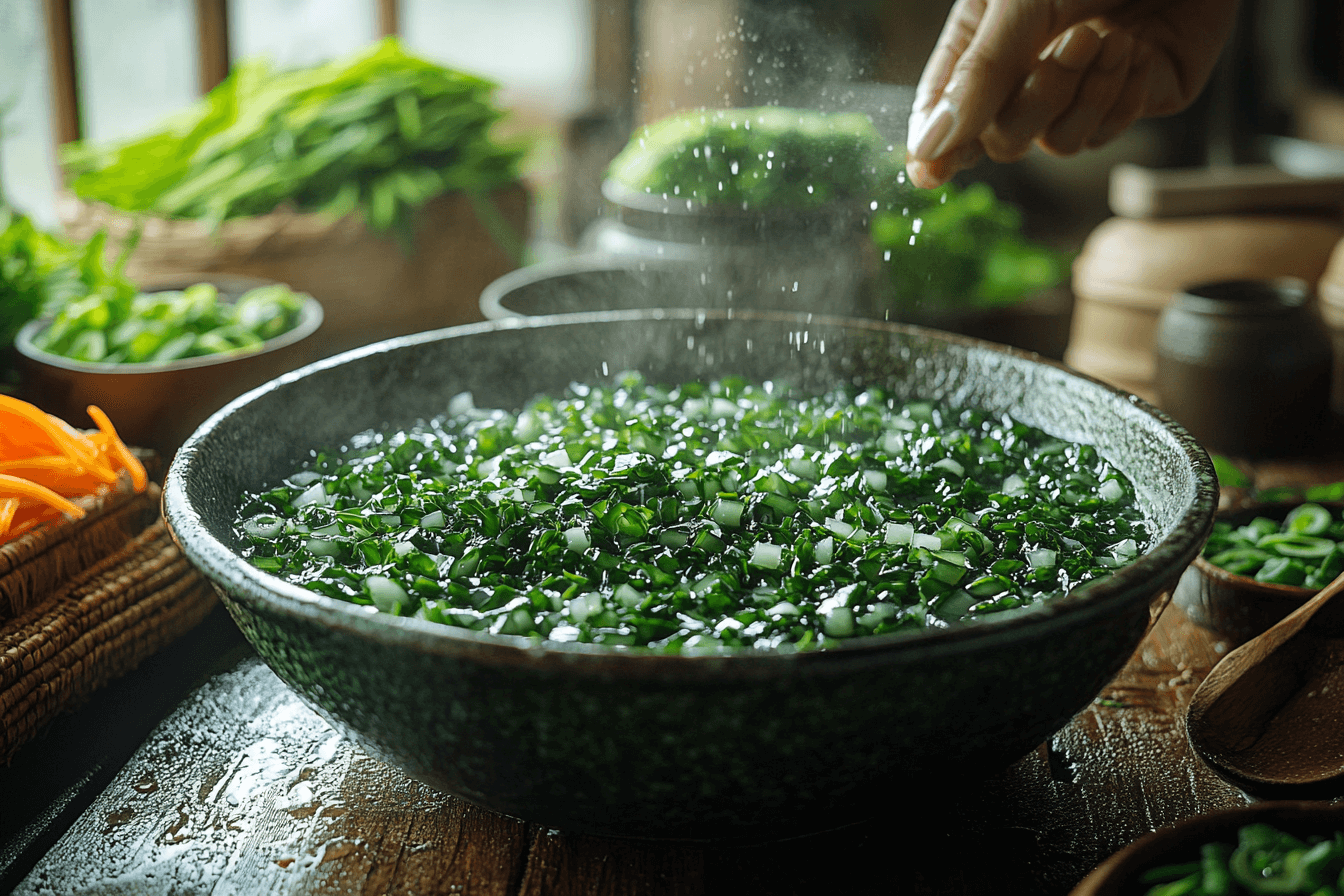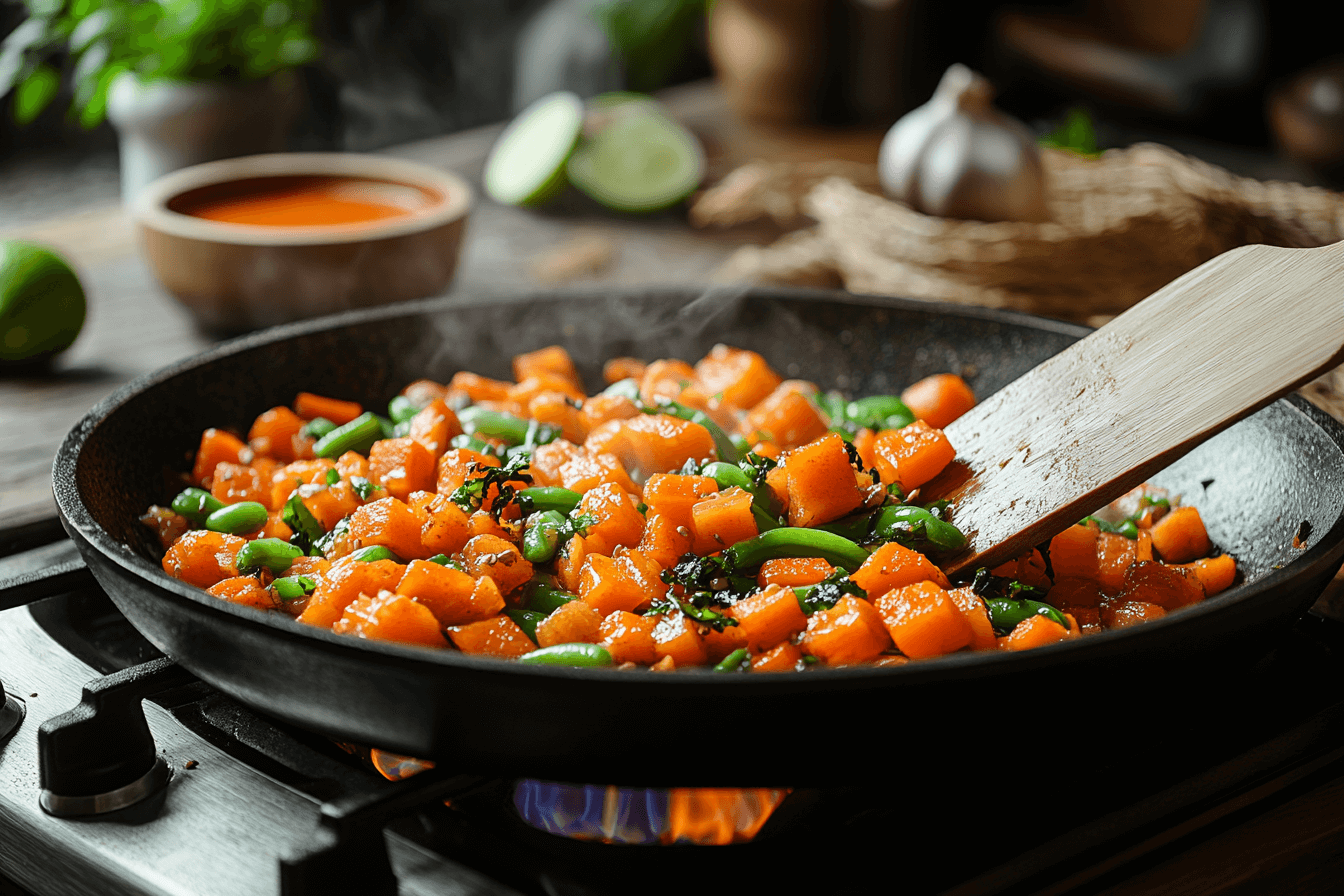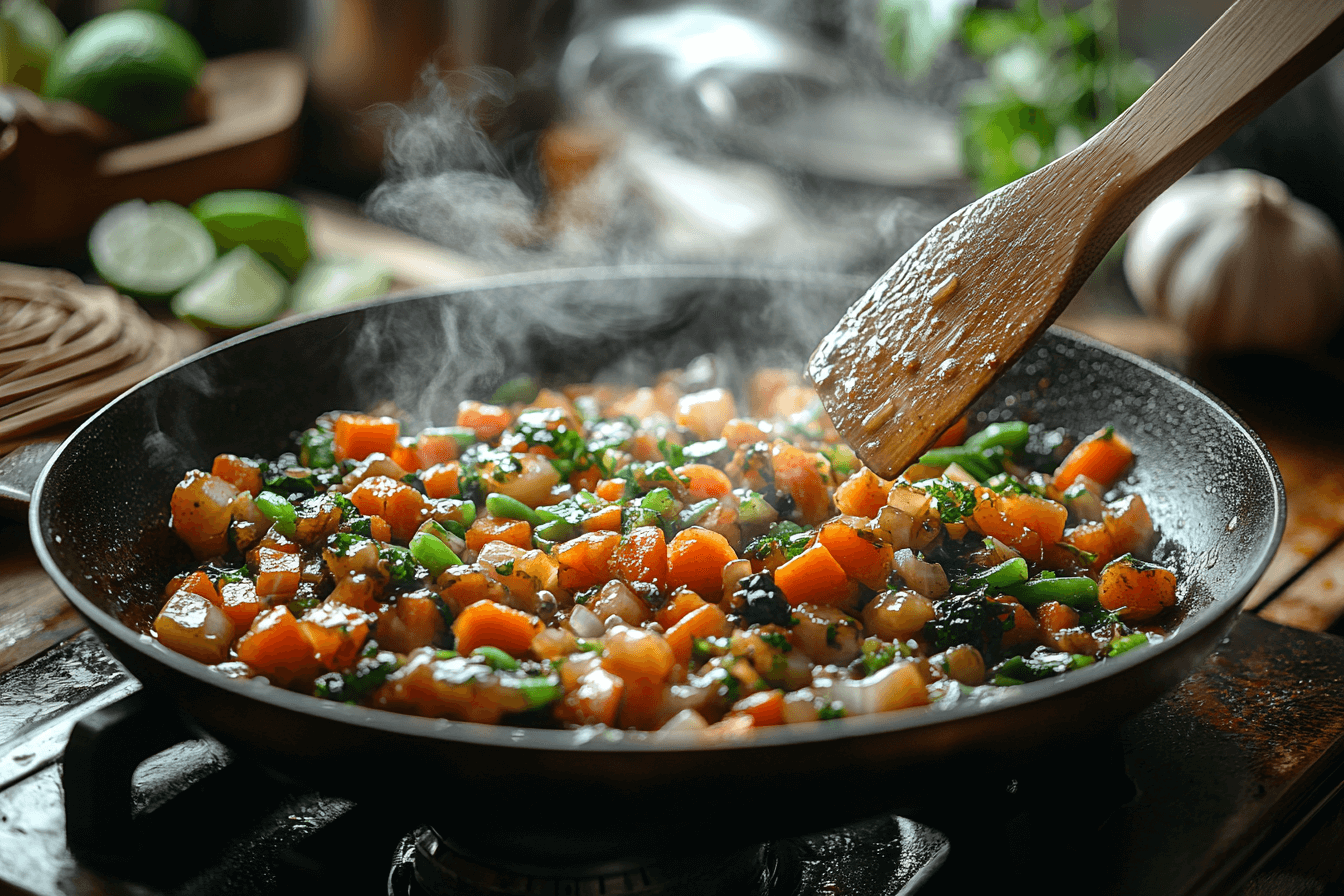Healthy Hijiki Seaweed Recipe for Moms Traveling with Kids in Bali
Looking for a healthy and flavorful dish to enjoy during your Bali vacation?
This hijiki seaweed recipe is a perfect blend of traditional Japanese cuisine and Balinese flavors.
Packed with nutrients and easy to prepare, it’s ideal for moms traveling with kids who want a wholesome family meal.
What is Hijiki Seaweed?
Hijiki seaweed is a traditional Japanese ingredient known for its earthy flavor and numerous health benefits.
This dish combines hijiki with Balinese spices, creating a unique and nutritious meal that pairs perfectly with rice or vegetables.
Balinese Inspiration for Hijiki Seaweed
This Bali-inspired version of hijiki seaweed incorporates coconut milk and kecap manis, adding a tropical sweetness and creamy texture to the dish.
By using fresh local vegetables and a hint of sambal matah, the recipe transforms into a fusion of Japanese and Balinese flavors.
Ingredients for Kid-Friendly Hijiki Seaweed

15g dried hijiki seaweed, soaked and drained
1 small carrot, julienned
½ cup green beans, sliced
1 tablespoon coconut oil
2 tablespoons soy sauce
1 tablespoon kecap manis (sweet soy sauce)
½ cup coconut milk
1 teaspoon grated ginger
1 clove garlic, minced
Optional garnish: toasted sesame seeds or fried shallots
Step-by-Step Guide to Cooking Hijiki Seaweed
Prepare the Hijiki Seaweed:
Place the dried hijiki seaweed in a bowl and cover it with cold water. Let it soak for 10–15 minutes until fully rehydrated.
Drain and rinse well to remove any residual sand or debris.
Slice the Vegetables:
Julienne the carrot into thin matchstick pieces for quick cooking. Slice the green beans into bite-sized pieces.
Prepare additional vegetables, such as bell peppers, if desired, to add color and variety.
Create the Sauce:
In a small bowl, whisk together soy sauce, kecap manis (sweet soy sauce), coconut milk, grated ginger, and minced garlic.
Add a squeeze of Balinese lime juice for a tangy touch.
Heat the Pan:
Heat coconut oil in a large skillet or wok over medium heat. Ensure the oil is evenly distributed for consistent cooking.
Cook the Vegetables:
Add the julienned carrots and green beans to the hot skillet. Stir-fry for 2–3 minutes until they are slightly softened but still retain some crunch.
Add the Hijiki Seaweed:
Stir in the rehydrated hijiki seaweed and cook for an additional 2 minutes, allowing it to mix well with the vegetables.
Combine with the Sauce:
Pour the prepared sauce into the skillet, stirring to coat the hijiki and vegetables evenly.
Reduce the heat to low and let the mixture simmer for 3–5 minutes, allowing the flavors to meld.
Finish and Serve:
Transfer the hijiki seaweed mixture to a serving dish. Garnish with toasted sesame seeds, fried shallots, or chopped cilantro for added texture and flavor.
Serve warm with steamed jasmine rice or Balinese yellow rice.
Tips for Serving Bali-Style Hijiki Seaweed
Balinese Presentation Tips: Serve the hijiki seaweed on a banana leaf for a traditional Balinese touch. Use a large wooden or bamboo serving plate for a rustic, island-inspired look.
Complementary Flavors: Pair the dish with sambal matah (Balinese chili relish) on the side for those who enjoy a spicy kick.
Make It Kid-Friendly: For younger children, reduce the amount of garlic and ginger in the sauce and add extra kecap manis for a sweeter flavor.
Enhance with Balinese Ingredients: Add a small amount of turmeric or galangal to the sauce for a more authentic Balinese flavor. Fresh lemongrass can also be added for a citrusy note.
Texture and Consistency: Stir-fry the vegetables quickly over high heat to maintain their vibrant colors and crisp texture. Ensure the hijiki seaweed is well-drained to avoid excess moisture in the dish.
Garnish Like a Pro: Use fried shallots, toasted sesame seeds, or a drizzle of extra kecap manis to enhance the visual appeal and flavor of the dish.
Nutrition Facts for Hijiki Seaweed Recipe
Calories
180 kcal
Fat
7g (3g saturated fat)
Cholesterol
0mg
Sodium
400mg
Carbohydrates
18g (6g sugars, 3g fiber)
Protein
5g
FAQs About Making Hijiki Seaweed in Bali
Q1: Can I use other types of seaweed for this recipe?
A: Yes, wakame or arame can be used as substitutes, though they have slightly different textures and flavors.
Q2: Where can I find hijiki seaweed in Bali?
A: Hijiki seaweed is available in specialty Asian grocery stores or larger supermarkets like Pepito and Carrefour.
Q3: How can I make this dish spicy?
A: Add sambal matah or a pinch of chili flakes to the sauce for a subtle heat that complements the dish.
Q4: Is this dish suitable for meal prepping?
A: Absolutely! The flavors intensify when stored. Refrigerate in an airtight container and reheat on the stovetop before serving.
Q5: Can I add tropical ingredients for a Balinese twist?
A: Yes, adding diced pineapple or mango provides a sweet and tangy balance to the dish, making it even more vibrant.
Q6: How do I store leftovers in Bali’s warm climate?
A: Store leftovers in an airtight container in the refrigerator and consume within 24 hours to maintain freshness.
Q7: What side dishes pair well with this recipe?
A: Pair the hijiki seaweed with steamed rice, nasi kuning, or a light Balinese vegetable salad.
Q8: Can I substitute kecap manis with another sauce?
A: If kecap manis is unavailable, use soy sauce mixed with a small amount of honey or palm sugar as a substitute.
Q9: How can I make this dish gluten-free?
A: Use gluten-free soy sauce and ensure the kecap manis is certified gluten-free for a safe alternative.







